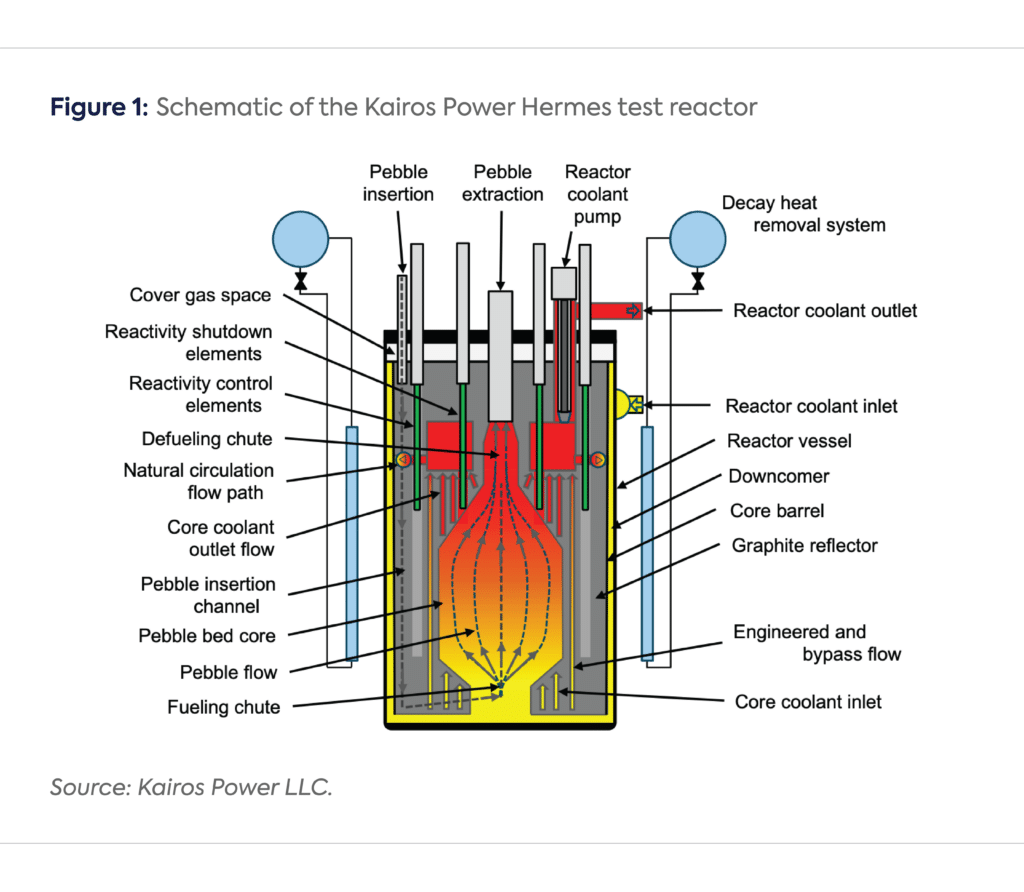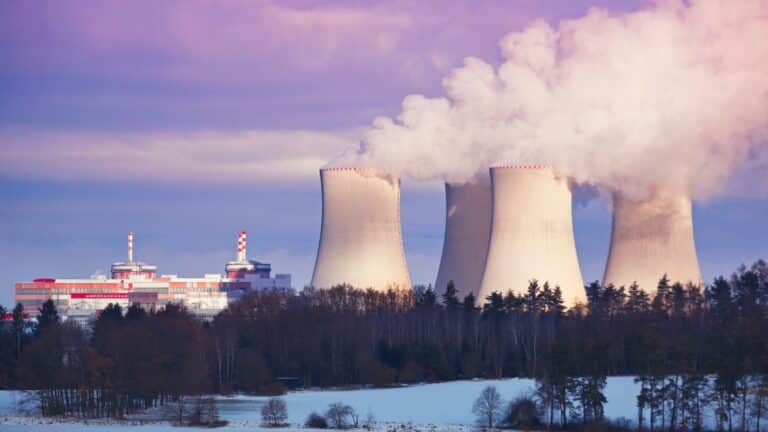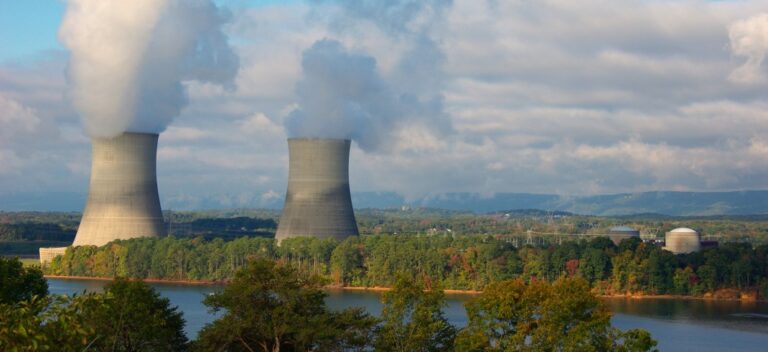China Halts U.S. LNG Imports Amid Tariff War
China has ceased importing liquefied natural gas from the United States since early February, as the ongoing tariff war impacts energy trade.
Current Access Level “I” – ID Only: CUID holders, alumni, and approved guests only
Insights from the Center on Global Energy Policy
This Energy Explained post represents the research and views of the author. It does not necessarily represent the views of the Center on Global Energy Policy. The piece may be subject to further revision. Contributions to SIPA for the benefit of CGEP are general use gifts, which gives the Center discretion in how it allocates these funds. Rare cases of sponsored projects are clearly indicated.
For a full list of financial supporters of the Center on Global Energy Policy at Columbia University SIPA, please visit our website at Our Partners. See below a list of members that are currently in CGEP’s Visionary Circle. This list is updated periodically.
Today, Kairos Power announced that it has signed an agreement[1] with the United States Department of Energy (DOE) to support the development of the company’s fluoride high-temperature test reactor (illustrated in Figure 1). The technology involved—a fluoride-lithium-beryllium salt coolant covering graphite spheres containing thousands of millimeter-sized coated fuel kernels—has never been built anywhere before and would represent a large departure from the technology in the current US reactor fleet of light-water-based designs. But the particulars of the DOE-Kairos agreement might separately signal a new approach to the DOE’s partnering with private advanced energy technology companies in the future.

The $303 million DOE award to Kairos Power was originally announced in 2020,[2] but it took years for both sides to come to an agreement on the details. Instead of the more conventional cost-sharing agreements that DOE has used in the past with private advanced reactor companies, Kairos Power wanted to use a “payment-for-milestones” structure. Such an approach had been recommended in non-governmental reports on advanced reactor demonstration[3] and is drawn from the successful NASA-SpaceX partnership in the Commercial Orbital Transportation Services program.[4]
The NASA program had solicited private aerospace companies to submit lists of milestones and associated payments for achieving those milestones toward developing launch capabilities, and then selected the winning companies. When SpaceX was chosen, the NASA agreement provided financial incentives for the company to achieve demonstrable milestones, which contributed to the company’s runaway success that has substantially lowered the cost of access to space.
A payment-for-milestones arrangement is different from how the Office of Nuclear Energy at DOE has partnered with advanced reactor companies in the past, including through programs such as Nuclear Power 2010, Small Modular Reactor Licensing and Technical Support, and the Advanced Reactor Demonstration Program. Under the cost-sharing arrangements in those programs, after being selected, companies would submit expenses to DOE for reimbursement. In a payment-for-milestones approach, by contrast, the federal government provides nothing to a company if it fails to achieve the milestones identified in the agreement—potentially protecting taxpayer money in cases when a company is failing to make tangible progress.
There are likely to be more of these payment-for-milestones agreements between DOE and private companies in the near future. The Office of Science at DOE has set out to use a similar approach to partnering with fusion companies—an approach discussed and suggested as an option by the National Academies in its “Bringing Fusion to the U.S. Grid” report in 2021.[5] DOE ultimately selected eight fusion companies in May of 2023[6] and has since been working to negotiate the associated payment-for-milestone agreements.
Time will tell how these new DOE agreements fare, but the urgency of bringing new advanced energy technologies to market in order to address energy and environmental challenges will continue—in the United States and elsewhere in the world. If this new type of agreement is perceived to have advantages—e.g., greater transparency for the public to know what it is getting for its money, reduced compliance costs for both government and private industry—during its implementation, as compared the more traditional cost-sharing arrangements, it could lead to similarly structured partnerships between DOE and private companies pursuing other types of advanced energy technologies, such as carbon capture or storage.
For Kairos, given that the company recently obtained (in December 2023) a construction permit from the US Nuclear Regulatory Commission to build the Hermes test reactor, the agreement means it will have financial incentives from DOE in place as it moves forward.
CGEP’s Visionary Circle
Corporate Partnerships
Occidental Petroleum Corporation
Tellurian Inc
Foundations and Individual Donors
Anonymous
Anonymous
the bedari collective
Jay Bernstein
Breakthrough Energy LLC
Children’s Investment Fund Foundation (CIFF)
Arjun Murti
Ray Rothrock
Kimberly and Scott Sheffield
[1] Kairos Power, “U.S. Department of Energy and Kairos Power Execute Novel Performance-Based, Fixed-Price Milestone Contract to Enable Investment in Advanced Reactor Demonstration Project,” press release, February 21, 2024, https://kairospower.com/external_updates/u-s-department-of-energy-and-kairos-power-execute-novel-performance-based-fixed-price-milestone-contract-to-enable-investment-in-advanced-reactor-demonstration-project/.
[2] US Department of Energy, “Energy Department’s Advanced Reactor Demonstration Program Awards $30 Million in Initial Funding for Risk Reduction Projects,” December 16, 2020, https://www.energy.gov/ne/articles/energy-departments-advanced-reactor-demonstration-program-awards-30-million-initial.
[3] Matt Bowen, “In Search of a SpaceX for Nuclear Energy,” Nuclear Innovation Alliance, May 19, 2019, https://www.nuclearinnovationalliance.org/search-spacex-nuclear-energy.
[4] NASA, “Commercial Orbital Transportation Services: A New Era in Spaceflight,” 2014, https://www.nasa.gov/wp-content/uploads/2016/08/sp-2014-617.pdf.
[5] National Academy of Sciences, Engineering, and Medicine, “Bringing Fusion to the U.S. Grid,” 2021, https://nap.nationalacademies.org/catalog/25991/bringing-fusion-to-the-us-grid.
[6] US Department of Energy, “DOE Announces $46 Million for Commercial Fusion Energy Development,” May 31, 2023, https://www.energy.gov/articles/doe-announces-46-million-commercial-fusion-energy-development.
This Energy Explained post represents the research and views of the author. It does not necessarily represent the views of the Center on Global Energy Policy. The piece...

This Energy Explained post represents the research and views of the author. It does not necessarily represent the views of the Center on Global Energy Policy. The piece...

President Donald Trump has made energy a clear focus for his second term in the White House. Having campaigned on an “America First” platform that highlighted domestic fossil-fuel growth, the reversal of climate policies and clean energy incentives advanced by the Biden administration, and substantial tariffs on key US trading partners, he declared an “energy emergency” on his first day in office.

This Energy Explained post represents the research and views of the author. It does not necessarily represent the views of the Center on Global Energy Policy. The piece...



